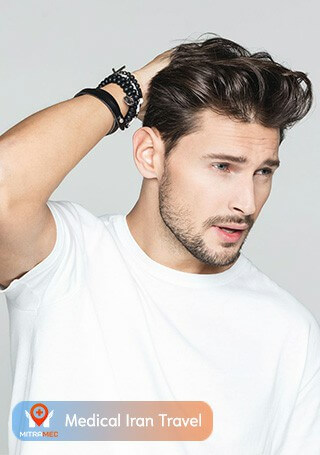
Hair Transplant in Iran
Do NOT Hesitate to have a Hair Transplant in Iran
Hair Transplant Packages
All hair transplant packages are provided with different levels of quality ECONOMY, COMFORT, VIP, and different destinations TEHRAN, ISFAHAN, SHIRAZ, and MASHHAD. We have highlighted the best three- to five-star hotels in Tehran and other cities.
Economic
- Visa Transfer
- 3*Hotel Surgery
- Interpreter
- SIM Card & Internet
- 24/7 Follow Ups
Comfort
- Visa Transfer
- 4*Hotel Surgery
- Interpreter
- SIM Card & Internet
- 24/7 Follow Ups
VIP
- Visa Transfer
- 5*Hotel Surgery
- Interpreter
- SIM Card & Internet
- 24/7 Follow Ups
Detail Hair Transplant Schedule
Day 1
An agent from Mitra-Med will be waiting for you at the airport upon your arrival. The private transfer taxi will take you to your destination hotel. After you check in to your hotel and have a rest, you will be taken to your physician’s clinic. The doctor will visit you. The required pre-surgery tests will be carried out. Your physician will explain the overall medical procedure. Then, you will be transferred back to the hotel and invited to the welcome dinner that we have arranged for you.
Day 2
You will be taken from your hotel to the clinic or hospital where your surgery will be carried out. The surgical team will prepare you for the operation; Your hair transplant will then be performed your physician will meet with you again and give you the necessary instructions for the recovery process, you will be transferred to your hotel again.
If need be, the donor area will be bandaged according to the method of hair transplant and based on your physician’s recommendations.Day 3
You will be transferred to the MitraMed office. You will be presented will a special gift from the MitraMed medical team as a memorial to your trip to Iran and you will then be taken to the airport to board your flight back home. The MitraMed medical team’s support plan until a 100 percent recovery is obtained will commence at this point at the end of the hair transplant.
IRAN, An Ideal Destination for Hair Transplant
Competitive Hair Transplant Cost in Iran
The overall cost of the hair transplant depends on the number of planted hair grafts, the area of the scalp that is being treated, and additional costs such as the cost of the clinic, the tests that need to be done prior to the surgery, the cost of the medical team, etc.
Hair transplant cost in Iran is approximately 800 to 2000 USD. The same treatment in pioneer countries such as the US and in Europe is between 5,000 to 15,000 USD and between 3,000 to 6,000 USD in countries such as Thailand, India, and Turkey. By choosing Iran as your destination for having the hair restoration done, you can reduce the overall cost of the procedure by up to 80 %.
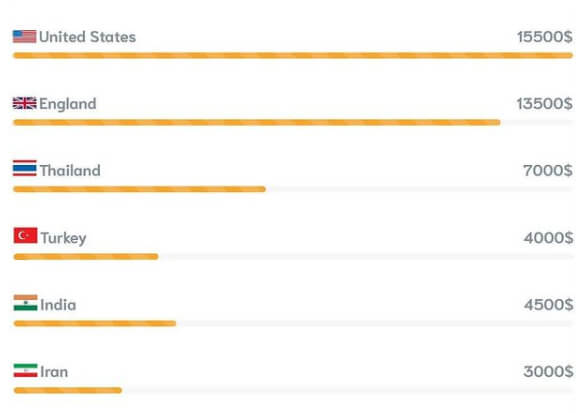
Best Hair Transplant Surgeons and Dermatologists in Iran
The 3 major factors of expertise, experience & art in the hair transplant among Iranian plastic surgeons and dermatologists, and the efficiency rate of over 90% have resulted in over 30,000 out of about 1 million health tourists traveling to Iran annually only to receive medical services for a hair transplant.
Leave Your Whatsapp Phone Number

Hair Transplant Popularity
According to the latest statistics published by the International Society of Hair Restoration Surgery (ISHRS), the popularity growth rate of having a hair transplant is very high worldwide. The high efficiency and low medical risk rate of hair transplants coupled with supplying advanced medical tools in this field during the last few years are a few of the reasons behind this rapid growth.
So that by the assessments done by the MitraMed Team and with the help of ISHRS data, if this trend has continued up to 2024, the total number of hair transplant surgeries has exceeded One Million surgeries and we compare this number with the statistics published by the International Society of Aesthetic Plastic Surgery (ISAPS), we find that this cosmetic surgery is in alignment to the three most repetitive cosmetic surgeries in the world.
Hair Transplant Procedure: All You Need to Know
In order to better understand the entire procedure of a hair transplant, we must initially take a look at the structure of hair and the terms most often used in hair transplants.
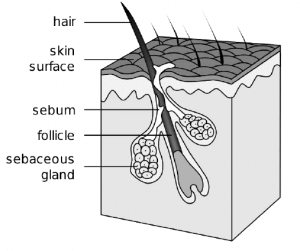
A hair follicle is actually one of the most important parts of the human and animal’s skin and it is responsible for making hair.
Hair follicles are like tube-like sacks that hair strands have rooted in and as the hair strands get longer, they protrude out of the surface of the skin.
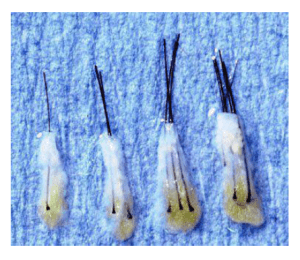
If you look closely at your own or other’s hair (even with a magnifying glass), you will notice that one or a few strands are located at the same place and their hair bulb is the same at that point. Each of these groups of hair follicles is called a hair graft.
The hair grafts at the back of the patient’s head – which fill up the gap between the ears measuring approximately 22 cm to 28 cm and are very dense and resist hair loss – are used for the hair transplant surgery.
The hair graft density in the skin of the head in Asians is approximately 100 grafts in each square centimeter and each graft generally has 2 strands of hair. About 20 % of hair grafts have only one strand of hair. Each individual person has about 12 to 15 thousand hair grafts in their Donor Area and approximately 50 % of them can be removed for transplant. So each patient’s donor area provides approximately 12 to 15 thousand hair follicles that can be used for transplant.
A hair transplant is one of the most effective methods to recover lost hair through surgery which is one of the varieties of cosmetic surgeries. Generally speaking, in various hair transplant procedures, the hair grafts or hair follicles are removed from the donor area and are planted in the areas that suffer from hair loss or baldness.
The two FUT Hair Transplant and FUE Hair Transplant methods are the most common methods of hair transplant worldwide. The other methods are either a combination of these two methods or the tools and equipment used by the surgeon in each of the methods is different.
Before Hair Transplant in Iran
Before starting the procedure in Iran, you will send photos of your hair that clearly show the areas with hair loss to the medical team in Iran.
Your physician will also ask you questions regarding your medical history in order to find out the cause of your hair loss. If hair loss can be stopped with treatment, you must take action before deciding to have a hair transplant in Iran.
In Iran, a specialist doctor will ask you to have the necessary tests prior to starting your medical procedure.
These tests include Microscopic hair evaluation, a pluck or pull test, scalp biopsy, or a blood test.
Before the hair transplant, your physician will explain the effectiveness of the treatment, the method that will be practiced, and the number of grafts required.
Read More: Beard Transplant in Iran
Read More: Eyebrow Transplant in Iran
Follicular unit extraction (FUE) Technique
- The hair on the head of the patient who is having the FUE surgery is shaved. The doctor will create a canal around the follicle at a suitable angle with the hair follicle using his / her skill and art.
- The follicle is removed from inside the canal using a pair of forceps. This method does not involve removing a strip scalp from the donor area and a unit follicle is removed from each type of hair graft.
- Then the medical team will categorize the hair grafts according to the number of strands in each.
- the experienced plastic surgeon or dermatologist will plant the grafts using the utmost care and attention depending on the location of the area suffering from hair loss.

Follicular Unit Transplantation (FUT) Technique
- The hair at the donor site, where your hair is removed, will be trimmed to about two millimeters.
- The surgeon will cut out the strip of skin with the hair follicles that will be used as a graft. You’ll stay awake during the surgery.
- A technician will remove individual hair follicles from the strip and prepare them for transplantation. The surgeon will close your scalp with sutures.
- The hair follicles will then be inserted into the balding parts of your scalp in a pattern that looks natural.
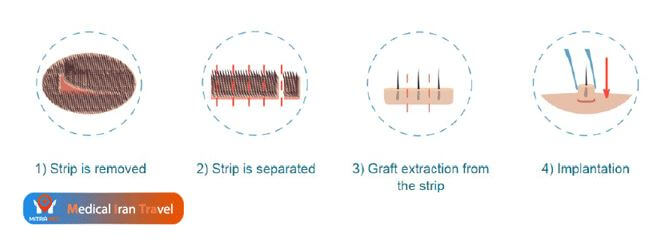
FUE or FUT? Which one is better?
Generally speaking, a single technique can NOT be introduced as the best method of having a hair transplant. The best method will be identified by your specialist plastic surgeon or dermatologist who has enough expertise and experience.
The amount of hair that the patient has lost, the hair density in their donor area, and the cost of the surgery will determine the chosen method of hair transplant.
Bearing all this in mind, if we consider all the hair transplant surgeries that have been done within the last few years in the world, we will realize the desired tendency and preference of surgeons and patients regarding the matter.

According to the published statistics regarding hair transplants, the FUE method is known to be more popular than the other methods. In 2016, 52.6 percent of all hair transplant surgeries were done using the FUE method, 44 percent were done using the FUT method and only 3.2 percent featured a combined method. Based on the rising trend for this method during the last decade, it is estimated that over 60 percent of all hair transplant surgeries worldwide are now carried out using the FUE method.
Read More: FUE Techniques
Hair Transplant Isn’t Merely an Expertise, it is Also a Form of Art
A transplant surgeon must have these three factors which will guarantee his / her success: Expertise, Experience & Art.
- An expert hair transplant surgeon will NOT damage the hair grafts as they are removed. Thus, the wasting of hair grafts will be minimal.
- An experienced hair transplant surgeon will know from which part of the donor area the grafts are to be removed because some hair follicles are NOT resistant to hair loss.
- A professional hair transplant surgeon will keep in mind the perfect angle of the hair follicles when he/she plants them in order to achieve the maximum amount of coverage. This will lead to higher efficiency in using the hair grafts and they won’t be wasted.
- A hair transplant surgeon’s art will determine how natural your hairline will look in accordance with your face and age. A mistake made by a novice surgeon will lead to a Doll’s Head-like Appearance.
- At the planting stage, the surgeon must place the thinner hair follicles at the front of the hair growth line and thicker hair follicles must be planted at the back.
Hair Recovery Transplant Timeline
It is possible to expect the amounts of hair mentioned below that will start to grow back after 3 months:
- Month 4 & 5, between 20% to 30%
- Month 6 & 7, between 40% to 50%
- Month 8 & 9, between 60% to 70%
- And months 10 to 12, between 80% to 90%
… of the implanted hair will have grown.
Hair Transplant Desired Results
The results of hair transplants will vary from person to person.
The amount of satisfactory results depends on the type of hair, the quality of the hair in the donor area, the skin of the area on the scalp that receives the grafts, and your genetics. However, there are other important & influential factors that you need to consider more carefully. Some of these factors include:
- The skill, experience & art of the surgeon and his / her accompanying team.
- The equipment used assists your physician during the surgery.
- And following the principles recommended by the surgeon after the surgery.
In general, and according to the latest published articles, up to 80% of the implanted hair will start to grow.
Statements such as transplanting over 50,000 hair strands, or 100% recovery of lost hair, or 100% effectiveness of some commercial hair transplant technique are all inaccurate propaganda designed for advertisement.
According to studies, better results will be obtained if the PRP method is practiced following a hair transplant.
Read More: PRP in Iran
Risks and Possible Complications of Hair Transplant
Hair transplant surgery is one of the least invasive and low-risk surgeries in the world. However, we should not forget that any type of surgery will have its own potential risks. On the other hand, the precision of the medical team in the examination stage before surgery, and the stages of hair removal and transplant can reduce the probability of such risks. These risks include swelling, bleeding, inflammation, and numbness of the scalp in the donor and recipient areas.
Hair Transplant Cost Factors
Due to the fact that the pattern & amount of hair loss is different from person to person, the cost of the hair transplant often varies and there is no fixed cost. However, there are two general approaches for a surgeon to calculate the cost of hair transplant surgery.
- The calculation is based on the area of the scalp that requires a hair transplant.
- The calculation is based on the number of hair grafts that are implanted using this method.
Of course, this is only the payment that the surgeon & his / her surgical team demand, and other costs including the cost of the clinic and equipment, hotel accommodation, flights, etc. will be added to this initial cost.
Read More: The basis for calculating the cost of a hair transplant
Female Hair Transplant
Hair loss and baldness affect approximately 20% of all women, which is much less than in men. About 20 to 30 percent of these women are suitable cases for having a hair transplant. However, there is no such restriction for men, and most men are can have a hair transplant. According to statistics published in 2016, approximately 13%, and 25% in 2019 of all hair transplant surgeries carried out in specialized hair transplant clinics have been for women.
But what could be the reason? Certainly, one of the reasons for this high demand is the greater sensitivity of women to their beauty, especially their hair.
Another reason is a cultural factor. Unlike men, in whom hair loss is sometimes regarded as a sign of maturity, and appropriate to the age of a middle-aged man, this belief is not the case regarding women and is less accepted by society.
This ever-growing demand has led a number of famous celebrities to resort to having a hair transplant.
Many women decide to have a hair transplant in order to lower their hairline.
Personal Quote
Hair Transplant Frequently Asked Questions
We have tried to gather most often questions from our clients regarding hair transplants in Iran, however, if you have not received answers to your questions we are more than happy to help, so please do not hesitate to contact us.
Why Mitramed?
- We will assist you to acquire a medical visa.
- Before you make your trip, we will provide you with free advice via sending photos to the medical team.
- You can easily choose from our Packages or pick out your own custom package.
- By choosing the MitraMed team, you will be able to experience having your Hair Transplant in Iran in the shortest time possible & without having to make any previous appointments.
- We are cooperating with the best surgeons and dermatologists in Iran and we will introduce them to you.
- Our activity is supervised by the Iranian Ministry of Health & the Iranian Ministry of Tourism.
- We will be by your side and accompany you after the surgery until you obtain the final quality of your surgery.
- We offer the best tourism services including accommodation, transfer, surgical teams & advanced clinics for cosmetic surgery, and personal interpreters & assistants.
Which Countries are the Most Affordable & Convenient for Having a Hair Transplant?
The three regions of North & South America, Asia, and the Middle East have the highest rate of hair transplant surgeries worldwide.
Countries such as America, Argentina, and Canada in America, Japan, South Korea, Thailand, and India in Asia, Turkey in Europe, and Iran and the United Arab Emirates in the Middle East are welcomed most by health tourists regarding hair transplant surgery.
For Whom is the Hair Transplant Suitable?
Not necessarily is each individual who suffers from hair loss an appropriate candidate for a hair transplant in Iran although in many cases, this surgery is the best and most effective treatment to restore lost hair.
- In many cases, if the metabolic problems in the patient’s body that lead to hair loss are treated, the lost hair will grow back; so, it is recommended to have blood tests in order to determine the condition of the thyroid and adrenal glands and the number of vitamins and minerals (specifically Zinc, Copper, Iron, and Vitamins D and B2) and Testosterone & Dihydrotestosterone (DHT) prior to having a hair transplant in Iran.
- Prior to having a hair transplant in Iran, the reasons behind hair loss must be identified and treated, or else the planted hair will suffer from hair loss and be gradually lost just as the previous natural hair the patient had.
- Hair transplant for patients who experience baldness as a result of chemotherapy or the use of certain drugs.
- Also, the patient must have a suitable donor area for the hair to be planted in weak and lost areas. So patients who suffer from pervasive sparsity or baldness of hair must pay more attention to this surgery.
- The best candidates amongst men for hair transplant in Iran are men who have become bald as a result of Androgenic Hair Loss (also known as the Male Pattern Baldness).
- In addition, hair transplant surgery in Iran must be carried out when hair loss has reached a stable or minimum condition. So men under the age of 25 and individuals who experience hormonal changes had better have the surgery done at higher ages.
Does a hair transplant really work?
In the FUE Hair Restoration, on average up to 90% of the implanted hair begins to regrow.
The advantages of using the FUE hair transplant method are as follows:
- There is no lasting scar where the hair is removed compared to the FUT
- You will not need anesthesia & you won’t feel much pain after the surgery.
- The FUE hair transplant is carried out in one day during a multi-hour procedure and there’s no need to remain in the clinic for recovery.
- Recovery happens rapidly.
- In an ideal case, up to 95% of the implanted hair will begin to regrow.
Is the hair transplant with pain?
Local anesthesia administered via pressure into the skin at the back and front of the head. As a result of this no needles or injections are required at all and hair transplant in Iran is completely painless.
What kind of tests is done before hair transplant in Iran?
We will do a hemogram to test the amount of white and red blood cells in your blood to make sure that you do not have anemia or an infection. At the same time we will check your blood for transmitted diseases such as HIV, Hepatitis B or C, Syphilis, etc.
what would be FUE hair transplant side effects?
The side effect of FUE hair transplant would be:
- infections.
- crust or pus drainage around the surgical sites.
- scalp pain, itching, and swelling.
- inflammation of hair follicles (folliculitis)
- bleeding.
- losing sensation around the surgical sites.
- visible areas of hair that don’t match the surrounding hair or are noticeably thinner.
Is hair transplant permanent?
The most effective solution for hair loss is a hair transplant. In Hair transplant surgery, on average of up to 90% of the implanted hair begins to regrow But like the rest of your hair follicles, the transplanted ones have a lifespan.
When can I see final hair transplant results?
You can see the hair transplant results as follow:
- Month 4 & 5, between 20% to 30%
- Month 6 & 7, between 40% to 50%
- Month 8 & 9, between 60% to 70%
- And month 10 to 12, between 80% to 90%
… of the implanted hair will have grown.
Why is hair transplants so cheaper compared to the prices in other countries?
Surgery, accommodation, and tourist services are much cheaper in Iran compared to other countries in the world. This is mainly because of the low value of the Iranian currency (IRR).
Do I choose a hair transplant surgeon?
If one of our plastic surgeons or dermatologists was recommended to you for a hair transplant in Iran you can add her or his name when contacting us. We will confirm whether these plastic surgeons are experts in the chosen procedures.
What are the Causes of Hair Loss in Women?
- Genetic Reasons
- Aging
- Hormonal Changes
- Taking Contraceptive Drugs
- Stress
- Injuries and Accidents
- Iron Deficiency (Anemia)
In Whom is Having a Female Hair Transplant Common in Iran?
- Women who suffer from patterned hair loss.
- Women who have localized hair loss due to prolonged inappropriate hairstyles, or pulling their hair up with a headband/hairclip.
- Women who have lost some hair due to cosmetic procedures such as face lift, eyebrow lift, or other injuries.
- Women who naturally have a high hairline ever since birth.
- For transgender patients who want to change their gender from male to female.
Is Having a Female Hair Transplant the Final Option in Women?
In no treatment is a hair transplant surgery the preferred solution. Even despite the fact that a hair transplant is one of the least invasive and low-risk cosmetic surgeries. In many cases, hair loss stops by accurately identifying the cause of hair loss and resolving it, and the lost hair begins to grow back. In these cases, even if a hair transplant is carried out, the new strands will not resist just like the original strands, and hair loss will continue.
Furthermore, achieving a successful hair transplant, especially in women, requires the existence of a suitable hair bank (donor area).
In many cases, baldness in women is the result of a scattered pattern, so there is no strong donor area available on the back of the head like in the case of men. Also, the quality of hair is very important regarding the success of the female hair transplant treatment.
This factor is so significant that a special device is utilized in order to access hair quality, and if the strand density in each graft is less than 1.5, the overall efficiency of the hair transplant treatment will be less than 50%. Or if the hair strands are thin, they will not be suitable for use in the recipient area.
Why Should Women Be More Sensitive About Their Hair Transplant Compared to Men?
• The fact that women are more concerned about their personal appearance has caused some hair transplant clinics to encourage ladies to have hair transplant transplants in unnecessary cases using advertisements. So, you have to be very careful regarding these ads.
• One should not expect an unrealistic result regarding a female hair transplant procedure and expect completely natural-looking and dense hair. However, most women expect more unrealistic results than men.
• Hair loss in women is often scattered, and if the donor area is not strong enough to cover the bald area of the head, the focus should be on one area, such as the front of the head or the scalp, which is more visible than other areas. However, in the case of men, hair from different parts of the body can be used for hair transplant on the head using the BHT technique.
• The quality of hair and the type of hair loss pattern have a significant impact on the overall success of female hair transplants. Men on the other hand, who are usually affected by the male hair loss pattern, do NOT have any particular problems regarding the procedure.
• In most cases, women are NOT fond of shaving their hair for the hair transplant treatment. In the FUE technique, only the donor area should be shaved, which can then be covered with long hair. Men on the other hand are less bothered about shaving their hair.
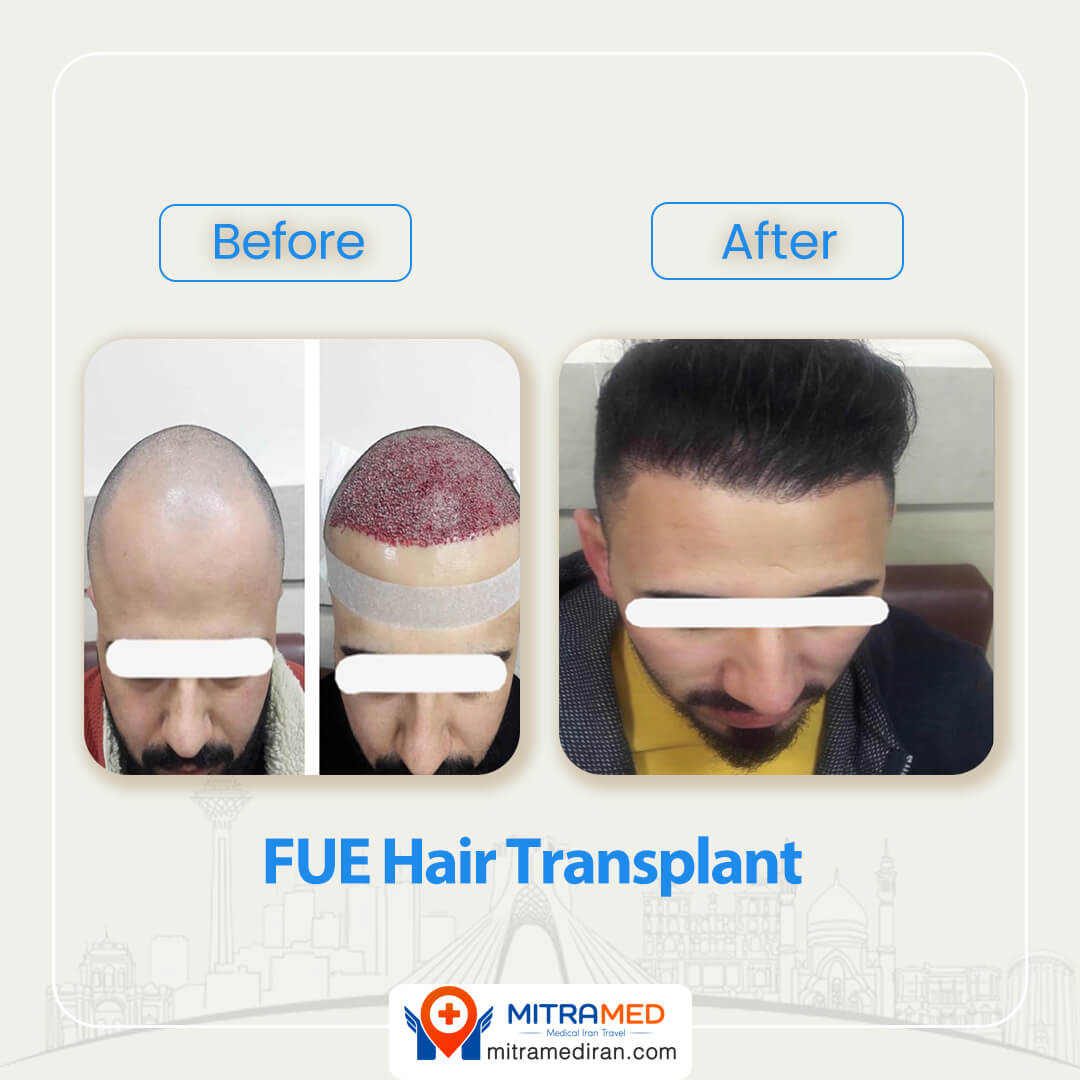
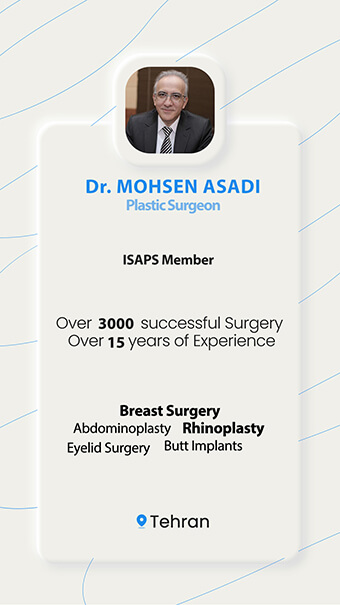
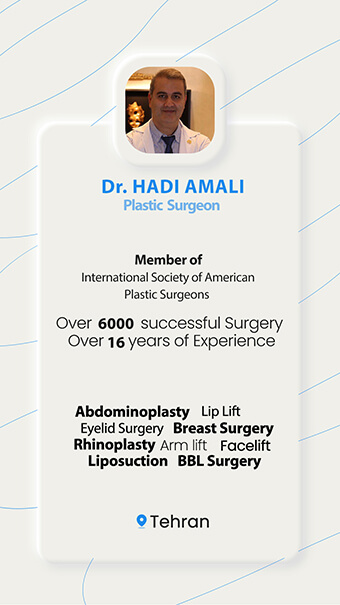
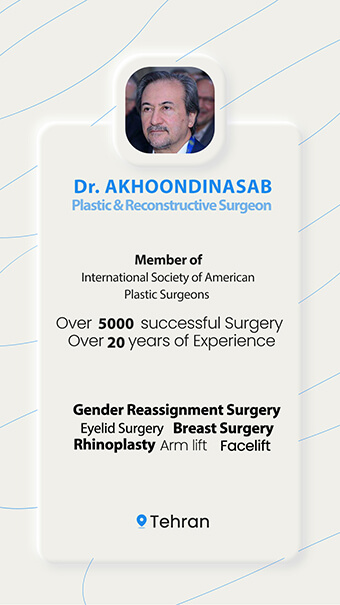
Hello,
Would you mind explaining the cycle of hair growth after the FUE procedure, please
Hello Yahya, Please Read “FUE Hair Transplant Timeline” here In this article.
Do hair transplants fail?